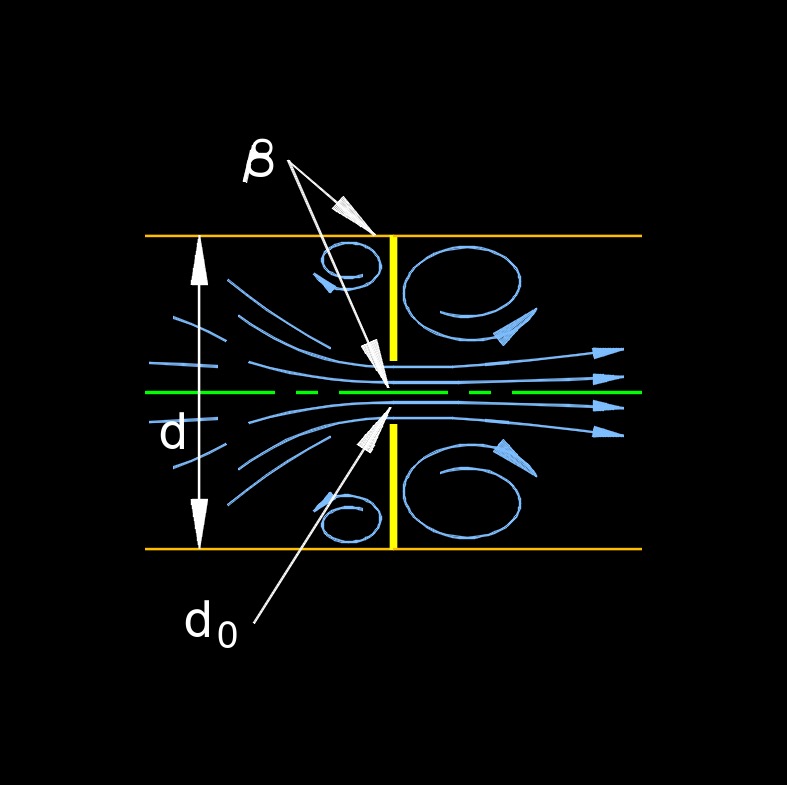Orifice Plate Beta Ratio
Orifice Plate Beta Ratio formula |
||
|
\( \beta \;=\; \dfrac{ d_o }{ d }\) (Orifice Plate Beta Ratio) \( d_o \;=\; \beta \cdot d \) \( d \;=\; \dfrac{ d_o }{ \beta }\) |
||
| Symbol | English | Metric |
| \( \beta \) (Greek symbol beta) = Orifice Plate Beta Ratio | \(dimensionless\) | \(dimensionless\) |
| \( d_o \) = Orifice Opening Diameter | \(in\) | \(mm\) |
| \( d \) = Pipe Inside Diameter | \(in\) | \(mm\) |

The orifice plate beta ratio, abbreviated as \( \beta \) (Greek symbol beta), also called beta value or beta coefficient, a dimensionless number, is the relative size of the orifice opening compared to the pipe diameter in which it is installed. The beta ratio is important in flow measurement applications using orifice plates because it affects the accuracy and performance of the measurement. The beta ratio determines the shape of the flow profile downstream of the orifice plate and influences factors such as pressure drop and flow coefficient.
Typically, orifice plate installations aim for a beta ratio between 0.2 and 0.8. A beta ratio of 0.2 means that the orifice diameter is 20% of the pipe diameter, while a beta ratio of 0.8 indicates that the orifice diameter is 80% of the pipe diameter. Choosing an appropriate beta ratio depends on factors such as the desired measurement accuracy, the flow conditions, and the specific application requirements.
It's worth noting that different beta ratios may require different correction factors and equations to accurately calculate the flow rate through the orifice. These correction factors take into account the beta ratio and other parameters to provide more precise measurements.

